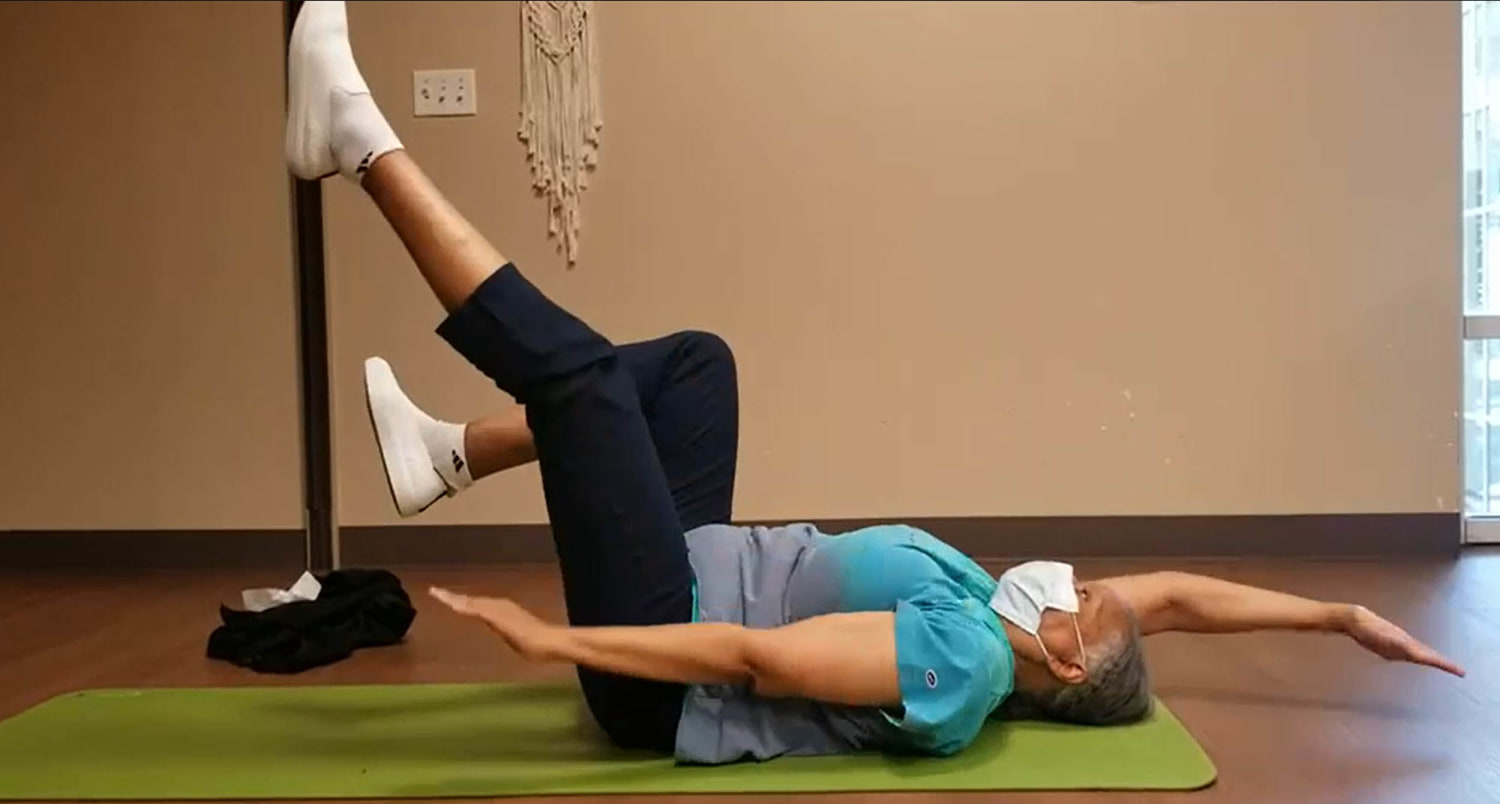June Furlan was alarmed when a mystery weakness started taking over her body, so her personal trainer suggested doing “dead bugs” to strengthen her core. She was already an avid gym goer, doing cardio and weight training several times a week. But Furlan suddenly found herself lacking energy and having trouble getting up.
— which target abs, obliques and spinal muscles — were meant to help. The bodyweight exercise involves lying on the back, then raising and lowering the opposite arm and leg. The funny name has earned it a , but Furlan felt the exercise working and regularly did three sets of 15.

But one day in the summer of 2022, she found she was too weak to lift her legs during her dead bugs. “I was proud that I could do them because they weren’t easy for me to do. And finally, I’ve mastered this exercise, and I could no longer do them.
I almost cried at that point,” Furlan, 71, who lives in Arlington Heights, Illinois, tells TODAY.com. “I became weaker and weaker and weaker.
...
It was scary.” Soon, she could no longer go up the stairs in her split-level house or roll over in bed. Her husband had to help her to brush her hair and put clothes on.
Frightened, Furlan went to the doctor. A test revealed her level of creatine phosphokinase — an enzyme released into the blood when muscles are damaged — was 50 times normal. It indicated a serious problem.
Furlan was diagnosed with , inflammation of the muscles due to injury, infection or an autoimmune disease. In her case, it was triggered by her body’s reaction to a statin she’d been taking to lower cholesterol. Statins can sometimes cause muscle aches and weakness, but Furlan developed a rare autoimmune response with statin exposure, says Dr.
Arjun Seth, her neuromuscular specialist and co-director of the Northwestern Medicine Myositis Clinic in Chicago. It meant her immune system was attacking her body. “The muscle was being inflamed.
And because the muscle was inflamed, it was causing muscle breakdown; and when the muscle breaks down, people notice that as weakness,” Seth tells TODAY.com. “It’s incredibly rare.
” Myositis in general affects 50,000 to 75,000 people in the U.S., but the statin-triggered type Furlan had — called HMGCR necrotizing myopathy — is seen in only two or three out of 100,000 patients, Seth says.
The condition impacted all her muscles, but especially the larger ones in the upper arms and upper legs, including the thighs and quadriceps. Core muscle weakness is another symptom, thus Furlan’s eventual inability to do dead bugs. For many people, difficulty getting out of a chair, climbing stairs or lifting their arms above their head are the first warning signs.
“The condition ends up being a chronic condition. So it turns into something like diabetes or hypertension where someone needs to be taking a medication lifelong,” Seth says. Patients take immune suppressants to calm down the body’s response.
In Furlan’s case, she’s receiving regular infusions of (IVIG) and the drug . Furlan says she’s now feeling great and is back to “about 95% normal.” She’s able to walk up and down stairs again, comb her hair and enjoy life.
She’s also back in the gym. “I can do dead bugs. I can do my planks.
I can do everything again. I’m excited about that,” she says. People taking a statin may get nervous reading Furlan’s story, but Seth says the rare autoimmune response she developed happens to a tiny number of the millions of people on the cholesterol-lowering drugs.
“The average person should not be worried about it,” he notes. “If they’re tolerating their statin and doing fine, they should not be worried about it.” But if a patient notices progressive weakness over three to six months while they’re on the statin and that continues after stopping it, that’s cause for concern, Seth adds.
The typical patients are 50 to 70 years old, but younger people can also be affected, especially in East Asia and other parts of the world where people eat lots of mushrooms, he says. That’s because certain mushrooms, such as chanterelles and oyster mushrooms, . Seth diagnoses patients by assessing their weakness, checking muscle enzyme levels in the blood and evaluating muscle function with tests like .
With an early diagnosis and treatment, patients can do very well — though some residual fatigue can persist, Seth says. They must stop taking statins, so he switches them to cholesterol-lowering medications that are safer in this autoimmune condition, such as . A.
Pawlowski is a TODAY health reporter focusing on health news and features. Previously, she was a writer, producer and editor at CNN..


















